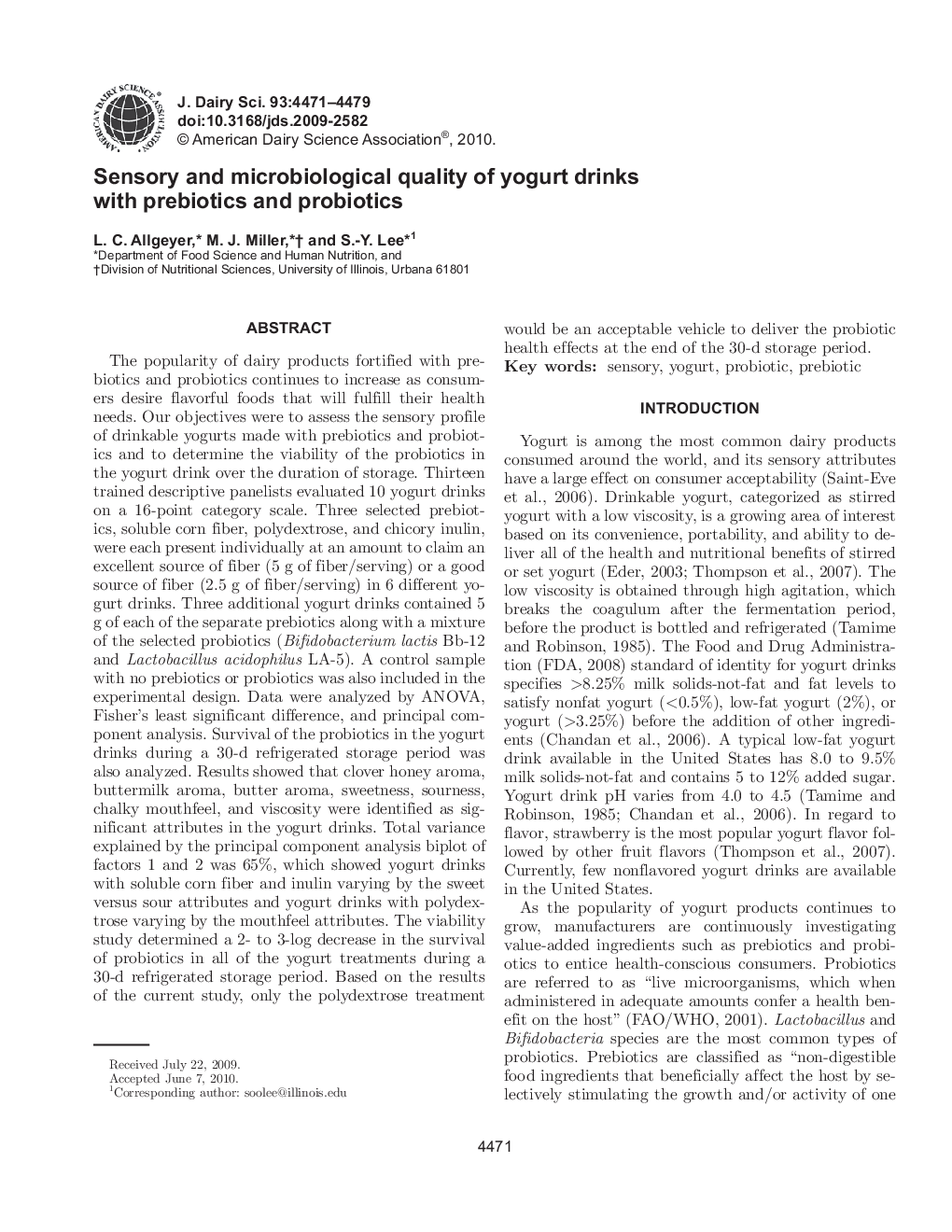| Article ID | Journal | Published Year | Pages | File Type |
|---|---|---|---|---|
| 5789855 | Journal of Dairy Science | 2010 | 9 Pages |
Abstract
The popularity of dairy products fortified with prebiotics and probiotics continues to increase as consumers desire flavorful foods that will fulfill their health needs. Our objectives were to assess the sensory profile of drinkable yogurts made with prebiotics and probiotics and to determine the viability of the probiotics in the yogurt drink over the duration of storage. Thirteen trained descriptive panelists evaluated 10 yogurt drinks on a 16-point category scale. Three selected prebiotics, soluble corn fiber, polydextrose, and chicory inulin, were each present individually at an amount to claim an excellent source of fiber (5Â g of fiber/serving) or a good source of fiber (2.5Â g of fiber/serving) in 6 different yogurt drinks. Three additional yogurt drinks contained 5Â g of each of the separate prebiotics along with a mixture of the selected probiotics (Bifidobacterium lactis Bb-12 and Lactobacillus acidophilus LA-5). A control sample with no prebiotics or probiotics was also included in the experimental design. Data were analyzed by ANOVA, Fisher's least significant difference, and principal component analysis. Survival of the probiotics in the yogurt drinks during a 30-d refrigerated storage period was also analyzed. Results showed that clover honey aroma, buttermilk aroma, butter aroma, sweetness, sourness, chalky mouthfeel, and viscosity were identified as significant attributes in the yogurt drinks. Total variance explained by the principal component analysis biplot of factors 1 and 2 was 65%, which showed yogurt drinks with soluble corn fiber and inulin varying by the sweet versus sour attributes and yogurt drinks with polydextrose varying by the mouthfeel attributes. The viability study determined a 2- to 3-log decrease in the survival of probiotics in all of the yogurt treatments during a 30-d refrigerated storage period. Based on the results of the current study, only the polydextrose treatment would be an acceptable vehicle to deliver the probiotic health effects at the end of the 30-d storage period.
Related Topics
Life Sciences
Agricultural and Biological Sciences
Animal Science and Zoology
Authors
L.C. Allgeyer, M.J. Miller, S.-Y. Lee,
